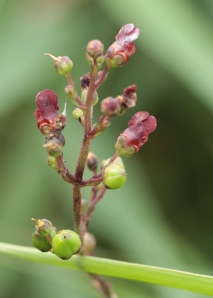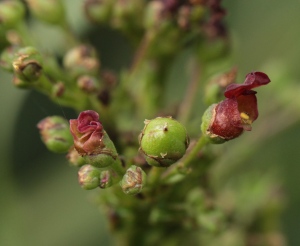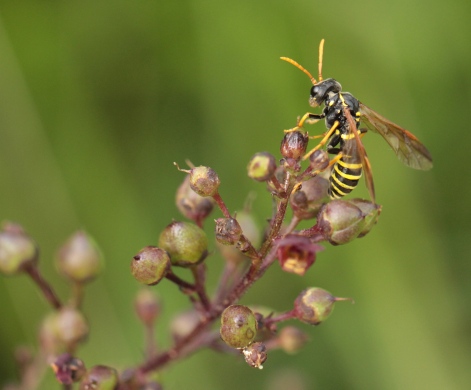Focus on the Figwort today, an easily overlooked but interesting plant that grows about a metre high and has tiny, fascinating maroon flowers, providing nectar for insects like Honey Bees but mainly pollinated by Wasps. The Latin and common name belies the uses this tiny flower used to be put to. By the somewhat hit-and-miss ancient practice of the ‘Doctrine of Signatures’, whereby a plant is thought to be able to treat the ailment or condition it most closely resembles, the Figwort was so-
named because it was thought to be good for treating piles or haemorrhoids, which used to be called ‘Figs’! Its Latin name of ‘Scrophularia’ derives from the belief that it was good for treating the ‘Kings Disease’ or Scrofula, a hard swelling of the lymph glands in the neck. Culpepper, the 17th Century Herbalist, called it Throatwort for the same reason, a name it still goes by in some parts. He writes that it was also used to remove freckles and spots on the skin, and it was often used to treat abcesses, burns and eczema. I looked at the Wasp in one of these photos and thought I’d try to identify it as it didn’t look like a Common Wasp- I thought it’d be easy but there are rather a lot of different wasps- some social, solitary, tree.…. plus different appearances of workers, males and queens. My brain started to hurt so I might have to look into all that another time! Also, and who’d be surprised in this country of esoteric interest-groups, there is a Bees, Wasps and Ants Recording Society (BWARS!). Conditions: Another fine day of light cloud and sunny intervals. Temperature: Max 17- Min 11 C



